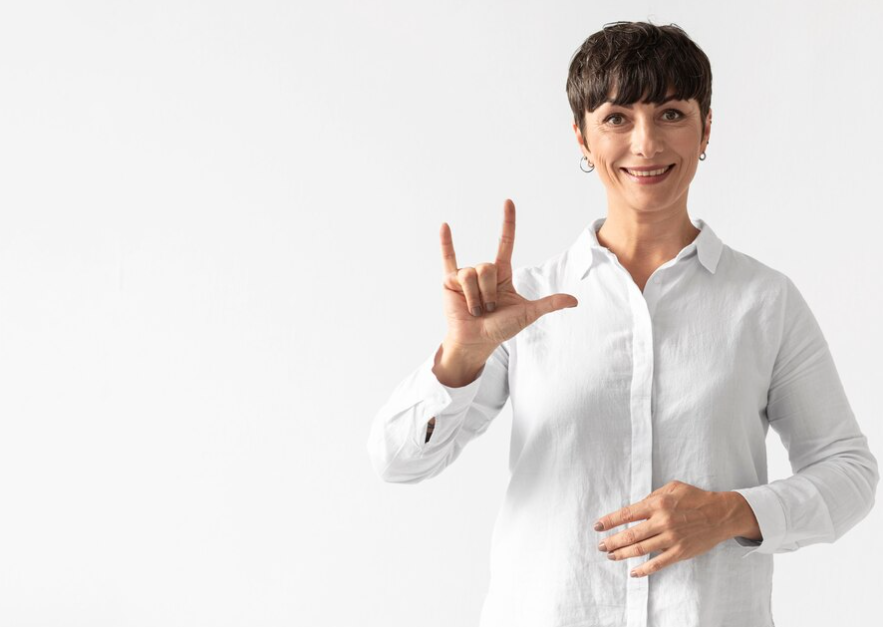In many people’s minds, the phrase “multilingualism” conjures up visions of proficiency in a spoken language and the capacity to traverse other cultures and communities via the influence of languages. On the other hand, the deaf community and its many communication methods offer a far more comprehensive image, displaying the intriguing setting of bilingualism in sign language. A common misconception is that gesture recognition is a single entity. However, this is different. It is a vivid mosaic of over 300 languages, each emerging spontaneously within unique historical and geopolitical situations.
One of the most notable aspects of human communication is the remarkable ability to communicate in multiple languages, including sign languages. Sign languages, much like spoken languages, exhibit a wide range of diversity across various cultures and regions. In this essay, we explore the concept of multilingualism in sign languages, delving into its various forms, implications, and significance.
Comprehending the Sign Languages Through
Natural language is a form of communication that employs visual-manual gestures to convey meaning. Sign languages are considered raw and distinct from spoken ones, as they have grammar, syntax, and lexicon. Sign languages are developed and passed down through generations by deaf communities, evolving and adapting.
Understanding the multilingualism
In the field of sign languages, multilingualism is a phenomenon that refers to the ability of individuals to be proficient in more than one sign language or to have been exposed to multiple sign languages. This situation can arise due to various circumstances and conditions.
The Use of Sign Language in Contexts That Involve Bilingualism
A considerable number of individuals with hearing impairment grow up in circumstances where they are exposed to both sign language and the spoken language of the hearing population surrounding them. Such bilingualism can stem from various situations, such as having parents who are deaf or attending mainstream schools that utilize both sign language and spoken language interchangeably.
Getting in touch with other sign languages
In communities where there are varied populations of individuals who are deaf, the possibility of interaction between different sign languages exists. This interaction can lead to language borrowing, code-switching, or even the emergence of Creole sign languages. The latter refers to a language that combines features from several other sign languages.
Transnational communities
Due to the rise of globalization and increased connectivity, it has become increasingly possible for deaf individuals to connect with sign language users from various countries. This exposure has allowed them to become acquainted with numerous sign languages. Many transnational Deaf groups have established unique linguistic traditions that often incorporate characteristics of multiple signature languages.
Meaning and Implications of the Situation
In sign languages, the phenomena of multilingualism has several ramifications, including the following:
The Exchange of Cultures:
The development of multilingualism in sign languages encourages cultural interchange and mutual comprehension among Deaf populations all over the globe. It allows people to share their experiences, customs, and points of view, which contributes to advancing the shared identity of the Deaf community worldwide.
Individuals who are deaf and who can communicate in several sign languages benefit from the increased availability of services and knowledge when they are multilingual. As a result, they can converse successfully across language borders and participate in various interpersonal learning opportunities and job-related activities.
Diversification of Languages:
The diversity of sign languages and regional dialects is not limited to one particular country but spans the world. The cultural and socioeconomic differences within each country shape these diverse languages and dialects. For example, Indian Sign Language (ISL) features several regional variants that are influenced by the customs and languages of the local communities. This results in a rich tapestry of sign languages and dialects that is unique to each region, reflecting the diversity of human experience and expression.
In the Deaf community, preserving and celebrating the cultural and linguistic variety is accomplished through multilingualism in sign languages. In doing so, it recognizes the significance of each sign language as a distinct mode of interpersonal interaction acknowledgement and appreciation.
Several potential answers are offered by technology. Although computerized translation for sign language is still in its early years, there is tremendous promise for automated communication across various sign languages.
Challenges and Prospective Courses of Action:
Even though it has many advantages, multilingualism in sign languages has several difficulties and complications. It is of the utmost importance to provide sufficient resources for education, linguistic assistance, and interpretation services in situations involving a variety of sign languages. Furthermore, there is a need for further study to be conducted to have a better understanding of the dynamics of language interaction, bilingualism, and language learning among communities that use sign language. Creating a society that is more inclusive and equitable for deaf people all over the globe may be accomplished by tackling these issues, fostering more understanding and respect for multilingualism in sign languages, and solving the challenges themselves.
Concluding remarks:
Sign languages are a fascinating and complex form of communication that is used by millions of people worldwide. Multilingualism in sign languages refers to the ability to use multiple sign languages, each with its unique grammar, syntax, and vocabulary. This dynamic and evolving phenomenon reflects the richness and diversity of human communication, and it is essential to recognize the value of each sign language as a unique expression of human culture and identity.
As we continue to explore the multifaceted nature of sign languages, it becomes clear that they are much more than just a means of communication for Deaf individuals. Sign languages are rich cultural expressions that reflect the history, traditions, and values of Deaf communities around the world. By embracing multilingualism, promoting linguistic diversity, and fostering cultural exchange, we can create a more inclusive and accessible world for Deaf individuals, where their voices are heard and their rights are respected. At Languages Unlimited, with a team of experts in every language, providing our audience with the best, precise and accurate results. So they can assist and help people around the world

